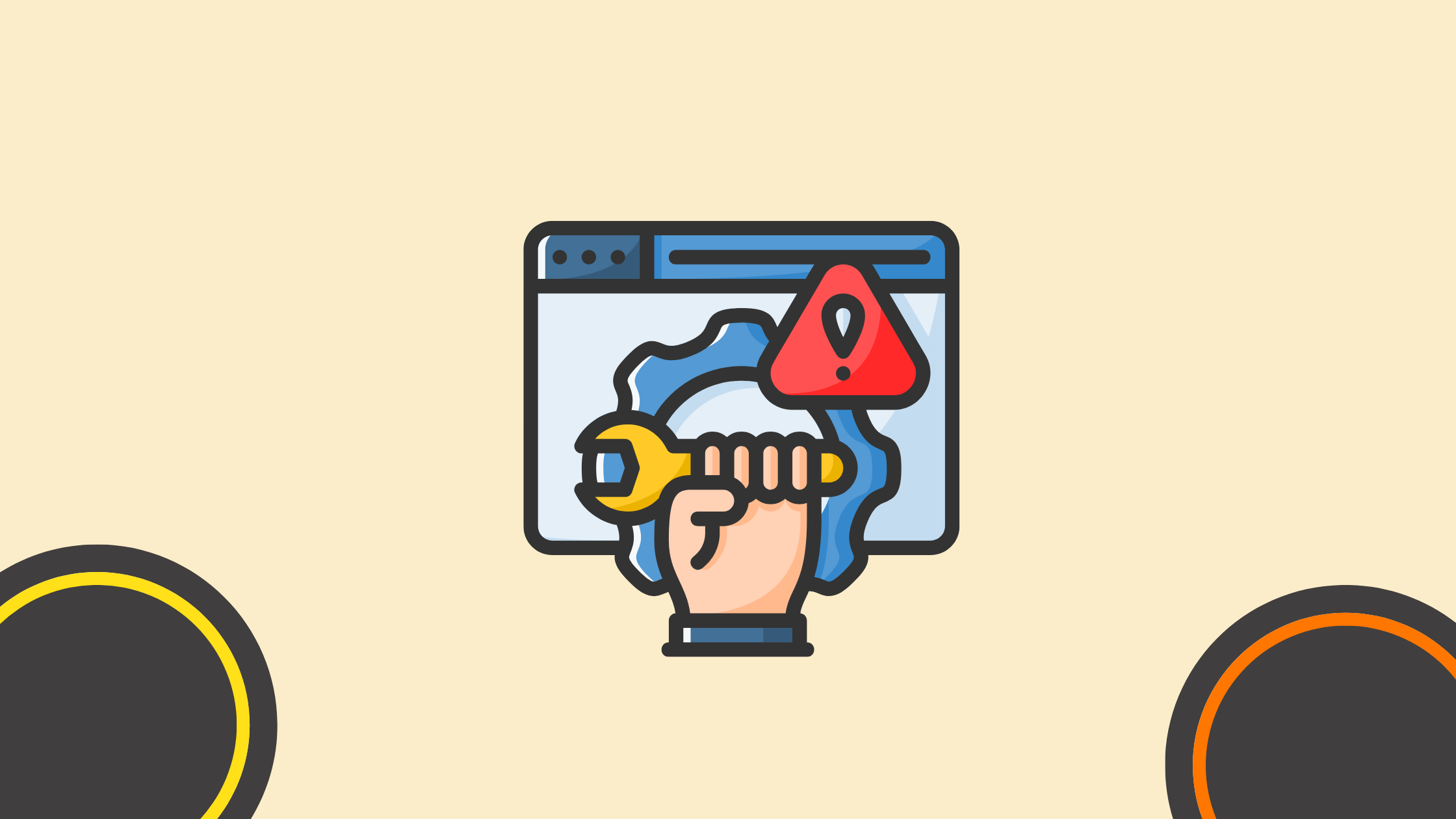Beyond A Pretty Site: The Case for Strategic Web Design

Key Takeaways
- Strategic web design goes beyond looks. It turns a visually pleasing site into a high-performing digital asset.
- Focusing only on aesthetic appeal can lead to high bounce rates and poor conversion rates. A thoughtful website strategy balances beauty, usability, and measurable results.
- Data-driven insights keep your website aligned with evolving goals. Regular use of analytics tools, conversion optimization, and an on-page SEO checklist helps monitor website metrics and improve search rankings over time.
- Investing in strategic web design strengthens brand credibility, enhances your digital presence, and supports long-term revenue generation. It’s key to creating meaningful digital experiences that drive growth.
You’ve probably landed on a website that looked stunning but somehow felt off. Maybe it was slow to load, hard to navigate, or didn’t clearly tell you what to do next. The website owner probably needs to learn more about strategic web design.
These days, it’s not enough to create a site that’s nice to look at. To make the most out of this digital asset, you must align your website design with your business objectives and your target audience’s needs.
The real success of web design lies in creating a digital experience that connects, informs, and inspires action. A beautiful layout means little if visitors leave after a few seconds or never convert into customers.
But how do you create a good one? Here are the most essential aspects to consider.
Chapters
The Problem With “Pretty but Pointless” Websites

Many businesses fall into the trap of prioritizing aesthetic appeal over function. You might see crisp graphics and images, trendy color schemes, and sleek animations.
However, beauty isn’t everything when it comes to website creation. If users can’t find what they need, the site’s purpose falls flat. High bounce rates, low conversion rates, and poor site performance are usually the results.
This happens because design decisions aren’t always tied to a clear website strategy. Businesses sometimes overlook things like user experience, content strategy, and loading speed—all of which shape how people perceive and interact with your brand online. Without a solid design strategy, a site may impress visually but fail to guide users through the customer journey effectively.
Businesses that rely heavily on online visibility must seek professionals who specialize in turning digital storefronts into customer-focused growth engines. There are several choices in The Gem State, and you’re surely find an Idaho Falls web design company that blends artistry and analytics.
When picking a web designer, make sure that they can make your site look good and meet your website objectives. By combining creative design elements with smart data-driven decisions, they help businesses improve user engagement and optimize for conversions.
What Makes Strategic Web Design Different
At its core, strategic web design bridges creativity and purpose. Every decision—from the color of a button to the placement of landing pages and call to action—serves a goal. This type of design starts with understanding who your user personas are and what they expect from your site.
It involves mapping the customer journey, defining measurable key performance indicators (KPIs), and ensuring your website development aligns with overall digital marketing strategies. It’s a full ecosystem where design, content, and technology work together toward revenue generation and brand credibility.
A strong design strategy covers several essential aspects:
- User experience (UX) and user interface (UI): These determine how easy it is to navigate your site. The user interface includes buttons, menus, and visual elements, while UX focuses on how intuitive the interaction feels.
- Responsive design: Today’s visitors use multiple devices, so mobile optimization and a mobile-first strategy ensure a seamless experience everywhere.
- Content strategy: Engaging text, videos, and exclusive content help users connect with your message while improving search rankings.
- Analytics tracking: Using analytics tools gives you valuable insights into visitor interactions, conversion rates, and areas for conversion optimization.
When all these elements work in harmony, your website transforms from a digital brochure into a dynamic growth engine.
How Design Impacts Business Objectives
If you think website design is only about visuals, think again. Each pixel and paragraph plays a role in achieving your company’s business objectives. A strategically designed site can:
- Increase conversions: Clear navigation, optimized landing pages, and strong calls to action improve customer acquisition.
- Boost brand differentiation: Cohesive visual identity and consistent messaging help establish market authority and expand market share.
- Enhance customer experience: Streamlined information architecture and fast load times keep visitors engaged.
- Support digital marketing: Integrated search engine optimization (SEO) and content updates strengthen your overall digital presence.
Take responsive design, for example. When your site adjusts automatically to any device, users enjoy a smoother customer experience, and that translates into trust and loyalty.
Connecting Design Strategy to User Engagement

Engagement is where design meets psychology. When you understand your target audience, you can tailor your website design requirements to fit their behavior patterns. It means simplifying navigation for older users or integrating sign-up links and interactive visual elements for younger, tech-savvy visitors.
To boost user engagement, strategic designers focus on how visual and interactive components shape the digital experience. Every call to action, testimonial, and product showcase must guide users deeper into the customer journey.
Smart web design agencies also collect user feedback to adjust layouts, refine content strategy, and improve site performance. The result? A more refined website ROI (return on investment) that reflects real results, not just impressions.
From Vision to Execution: Turning Concepts Into Conversions
A successful website is built through collaboration. Web designers, developers, and content creators work together to bring your design strategy to life. The process usually starts with brainstorming sessions, wireframes, and mood boards to define the overall visual strategy and tone.
Afterward, the team chooses suitable color schemes, graphics and images, and user flows that enable brand differentiation. Tools with visual editing features, often found in modern website builder platforms, make it easier to adjust layouts without extensive coding.
Once everything is set, designers focus on testing site performance, improving loading speed, and ensuring smooth client interactions. The final phase includes conversion optimization, where designers analyze visitor interactions and tweak call to action placements to encourage engagement.
Why CMS Platforms Dominate the Web
Here’s an interesting fact: over 71% of websites have a content management system (CMS) integrated into their structure. That’s because CMS platforms simplify content creation, editing, and publishing—without requiring deep coding knowledge.
They also make it easier to implement updates, manage exclusive content, and maintain a consistent information architecture. Whether you’re planning a website redesign or building from scratch, using a CMS helps balance design freedom with practical content management.
Plus, many CMS platforms include SEO plugins, security add-ons, and analytics tracking options to help you handle everything in one place. For growing businesses, this flexibility supports scalability and long-term sustainability.
The Role of Search Optimization and Analytics

A visually appealing site is great, but without visibility, it won’t fulfill its purpose. That’s where keyword research and SEO come into play. By optimizing content around relevant phrases, you increase your site’s chances of ranking higher in search results and capturing more market opportunities.
It’s equally important to monitor your performance. Through analytics tools, you can track metrics such as bounce rate, conversion rates, and session duration. These insights show how well your website development aligns with your overall website objectives.
To fine-tune your performance further, you can use an on-page SEO checklist to ensure your pages are fully optimized—covering everything from meta descriptions to image alt tags. A systematic approach like this keeps your web development in sync with your digital marketing efforts, ensuring that your design choices directly impact visibility and conversions.
Measuring Success Through Website Metrics
Once your website is live, the work doesn’t stop. Continuous improvement is key. You can use analytics tools to assess performance and make informed decisions about conversion optimization and customer acquisition.
Your key performance indicators should include things like traffic sources, engagement levels, bounce rate, and conversion rates. By closely tracking these numbers, you’ll see how well your site meets its website objectives and contributes to overall revenue generation.
Effective website development doesn’t just build pages. It builds data systems that support growth. Through analytics tracking, you gain insights into your customer journey, refine content strategy, and uncover new market opportunities for expansion.
Keeping Up With Web Design Trends
Web design never stands still. Each year brings new approaches that influence how users interact with online content. Current web design trends emphasize simplicity, intuitive user interfaces, and immersive digital experiences.
Designers now rely heavily on data-driven insights and user stories to guide creative choices. For example, minimal layouts improve load time and focus attention on what matters most. Likewise, incorporating micro-animations or dynamic visual elements can make customer interactions feel more personal.
If you haven’t updated your site in a while, a website redesign may be necessary to maintain brand credibility and competitiveness. Keeping up with evolving market opportunities ensures your brand remains relevant and discoverable.
The Long-Term Payoff of Strategic Design
Investing in strategic web design isn’t just a one-time project. It’s an ongoing process that strengthens your brand differentiation and market authority. By continuously refining your visual identity and adapting to user behaviors, you maintain a strong digital presence that attracts and retains customers.
The payoff? Better engagement, higher trust, and stronger results. With a cohesive design strategy, your site becomes more than a digital brochure. It turns into a living, breathing part of your business that drives measurable growth.
Strategic design is about blending beauty with purpose. When you prioritize both form and function, your website becomes a tool for storytelling, interaction, and revenue generation. It reflects your values, serves your users, and stands out in a crowded market.
Final Thoughts
When you go beyond a pretty site, you start building something that truly works for your business. Through thoughtful information architecture, responsive layouts, and well-planned content strategy, you create a seamless path from curiosity to conversion.
Strategic web design is all about purpose. It’s what transforms a static webpage into a thriving growth engine that supports your goals, enhances your digital marketing, and strengthens every customer experience along the way. It aligns your website design with clear business objectives and your target audience’s needs.
Author Bio
Jeanet Clarke is a freelance digital content writer who loves exploring how design and storytelling shape the online experience. When not writing, Jeanet enjoys hiking, photography, and discovering creative websites that inspire new ideas.
Other Interesting Articles
- AI LinkedIn Post Generator
- Gardening YouTube Video Idea Examples
- AI Agents for Gardening Companies
- Top AI Art Styles
- Pest Control YouTube Video Idea Examples
- Automotive Social Media Content Ideas
- AI Agent for Plumbing Business
- Plumber YouTube Video Idea Examples
- AI Agents for Pest Control Companies
- Electrician YouTube Video Idea Examples
- AI Agent for Electricians
- How Pest Control Companies Can Get More Leads
- Top Software Development Companies
Master the Art of Video Marketing
AI-Powered Tools to Ideate, Optimize, and Amplify!
- Spark Creativity: Unleash the most effective video ideas, scripts, and engaging hooks with our AI Generators.
- Optimize Instantly: Elevate your YouTube presence by optimizing video Titles, Descriptions, and Tags in seconds.
- Amplify Your Reach: Effortlessly craft social media, email, and ad copy to maximize your video’s impact.
The post Beyond A Pretty Site: The Case for Strategic Web Design appeared first on StoryLab.ai.


Deixe um comentário